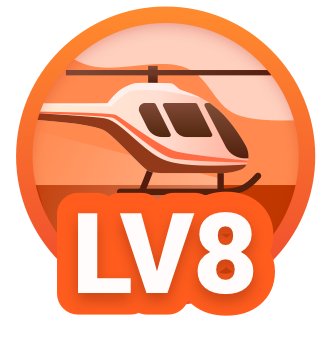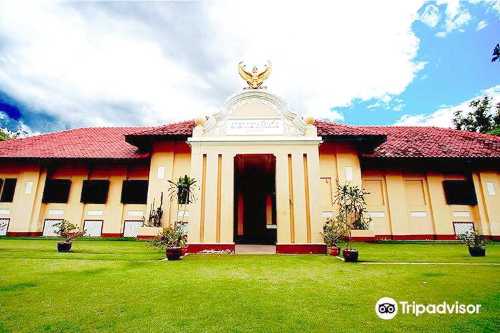Popular Trip Moments
Ubon Ratchathani… City of faith and art | ZEN | Newly opened tea shop in the old city of Ubon | Nai Tong Chicken Rice - A sincere restaurant in Ubon | Luang Pho Ngern 700 years old at Wat Pak Nam-Bung Saphang | Don't miss out, Sai Mu! A place to pay homage to Thao Wessuwanno. | Wat Phra That Nong Bua, Ubon Ratchathani Province | Ubon Ratchathani Candle Festival 2025, Ubon Ratchathani Province | รีวิว “Jurassic World: Rebirth – กำเนิดชีวิตใหม่🦖 | 🛕 Wat Phra That Nong Bua – A famous temple in the heart of Ubon Ratchathani | 🕯️✨ Review of the Ubon Ratchathani Candle Festival 2025 | Candle procession for Buddhist Lent | Ubon Ratchathani | Love Coffee | Ubon Ratchathani | Phu Phrao Temple (Sirindhorn Wararam Phu Phrao Temple) | Baan Gow, Grandma's House, Ubon Breakfast | Wat Burapha - Local architecture of Ubon | Lakhong - Restaurant | SAEREESOOK (Sereesuk) | UBON | Aim Seng - Wat Klang Roasted Pork Noodles | OLARN View - Sirindhorn Pool Villa Accommodation | Red ants - Sukhothai noodles, Baan Suan | Wat Phra That Nong Bua | Family-Friendly Restaurant with Great Atmosphere | 🥛🐮 MILK BOY – Milk Boy Fresh Milk | Ubon Ratchathani | ☕✨ Double U Coffee & Eatery - Ubon | Shiny Gold at Wat Phra That Nong Bua | Rai Phueng Cafe | Glowin’ Golden Vibes | 🏖️ Review of "Pa Pae Chuan Chim" @ Pattaya Noi, Ubon Ratchathani | 🧋💬 “Koibonori” – Cute bubble milk tea at Ubon Ratchathani University | Wang Kang Hung - Camping ground, relax by the Mun River
Recommended Attractions at Popular Destinations
Popular Attractions in Bangkok | Popular Attractions in Manila | Popular Attractions in Tokyo | Popular Attractions in Taipei | Popular Attractions in Hong Kong | Popular Attractions in Seoul | Popular Attractions in Kuala Lumpur | Popular Attractions in Los Angeles | Popular Attractions in Shanghai | Popular Attractions in New York | Popular Attractions in Shenzhen | Popular Attractions in Osaka | Popular Attractions in Singapore | Popular Attractions in London | Popular Attractions in Guangzhou | Popular Attractions in San Francisco | Popular Attractions in Beijing | Popular Attractions in Macau | Popular Attractions in Bali | Popular Attractions in Jakarta | Popular Attractions in Paris | Popular Attractions in Ho Chi Minh City | Popular Attractions in Istanbul | Popular Attractions in Phuket | Popular Attractions in Chicago | Popular Attractions in Seattle | Popular Attractions in Toronto | Popular Attractions in Orlando | Popular Attractions in Cebu | Popular Attractions in Chiang Mai
Popular Restaurants in Ubon Ratchathani
Steak & Grill Restaurant Ubon | BaansuanHugmom | Kuey-Jab 99 | Indochine - Ubon Ratchahani | Fern Hut Restaurant and Bakery | Rung Roj Stew Lin | N-Joy Bar and Restaurant | Ging 9 Vietnamese Restaurant | Phonthip Restaurant | Mum Aroi Ubon | Feeling Club and Restaurant | Khong Chiam Restaurant | Balcony Kiss | Risotto | Ricco Caf' | Aya Steak House | Dao Coffee | Somtum Jinda | Khun Te Restaurant | Taste of Milk | krua Suanpla | Nes Coffee Restaurant | U Bar | Zaap Soi 9 | Fuji Japanese Restaurant | Kok Kham | Chio Kee Restaurant | The brew | Wrong Way Cafe | Am-puch Coffee
Popular Ranked Lists
Top 10 Luxury Hotels near Kielce | Top 50 Must-Visit Restaurants in Seoul | Top 50 Luxury Hotels near Portici | Top 10 Luxury Hotels near Volarice | Popular Luxury Hotels Near Metepec | Top 50 Must-Visit Restaurants in Seattle | Popular Trending Attractions in Tianjin | Top 50 Must-Visit Restaurants in Munich | Top 10 Trending Attractions in Osaka | Popular Trending Attractions in London | Top 10 Trending Attractions in Phuket | Top 10 Luxury Hotels near Ujjain | Popular Luxury Hotels Near Fredericksburg | Popular Trending Attractions in Sapporo | Top 10 Luxury Hotels near Makarska | Top 50 Must-Visit Restaurants in Bali | Top 10 Trending Attractions in Harbin | Top 10 Trending Attractions in Guangzhou | Top 10 Luxury Hotels near Trapeang Thum | Top 50 Must-Visit Restaurants in Barcelona | Top 10 Luxury Hotels near Windsor County | Popular Trending Attractions in Changzhou | Popular Trending Attractions in Singapore | Top 10 Trending Attractions in Qinhuangdao | Top 50 Must-Visit Restaurants in Kunming | Popular Trending Attractions in Luoyang | Top 20 Must-Visit Restaurants in Hefei | Top 20 Must-Visit Restaurants in Tianjin | Top 50 Must-Visit Restaurants in Suzhou | Top 50 Must-Visit Restaurants in Shanghai
About
Payment Methods
Our Partners
Copyright © 2025 Trip.com Travel Singapore Pte. Ltd. All rights reserved
Site Operator: Trip.com Travel Singapore Pte. Ltd.
Site Operator: Trip.com Travel Singapore Pte. Ltd.
















































